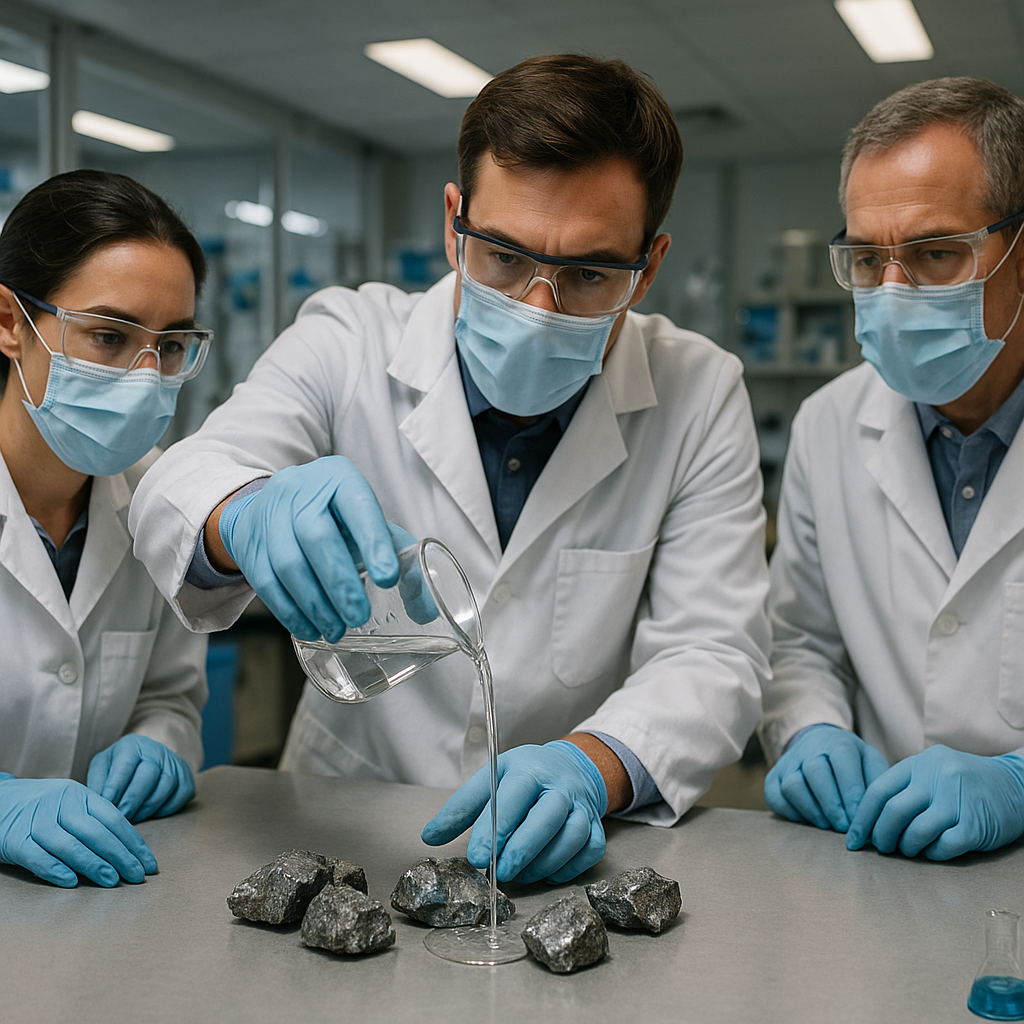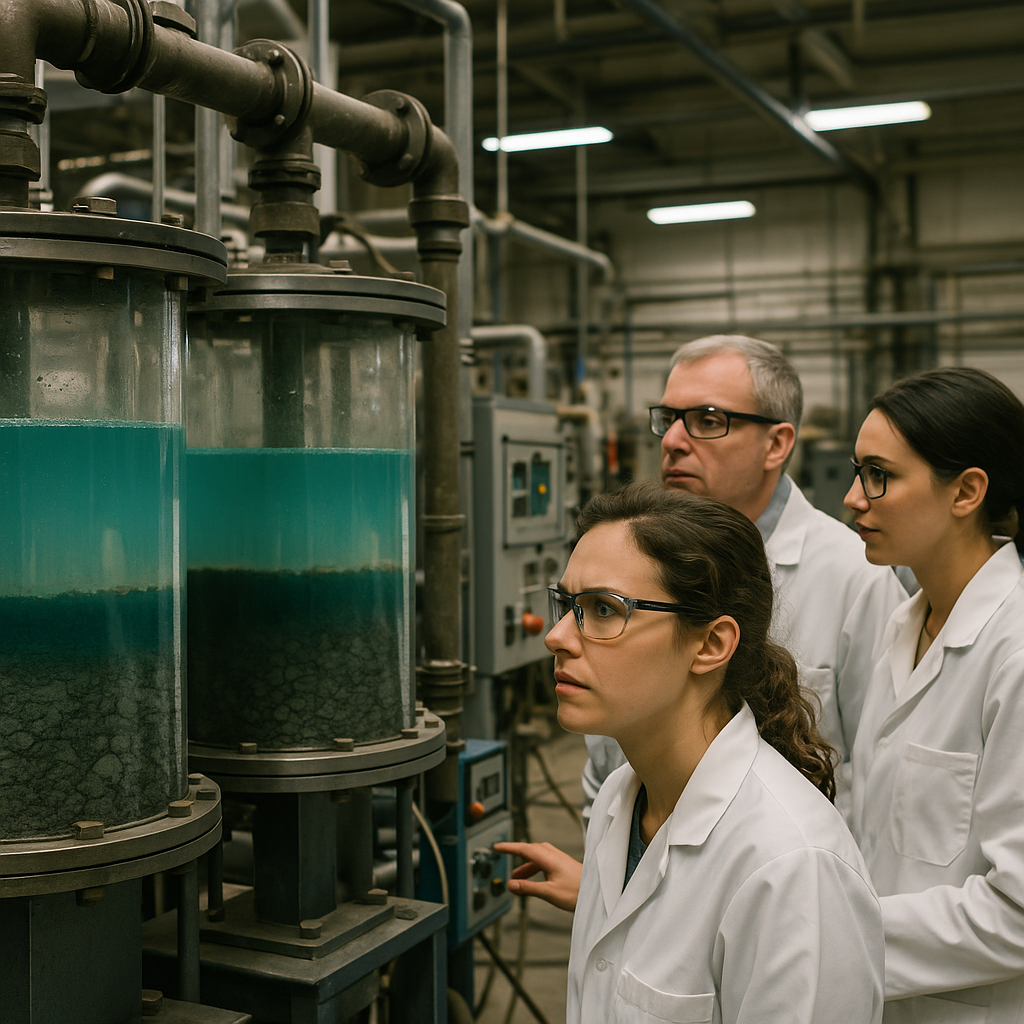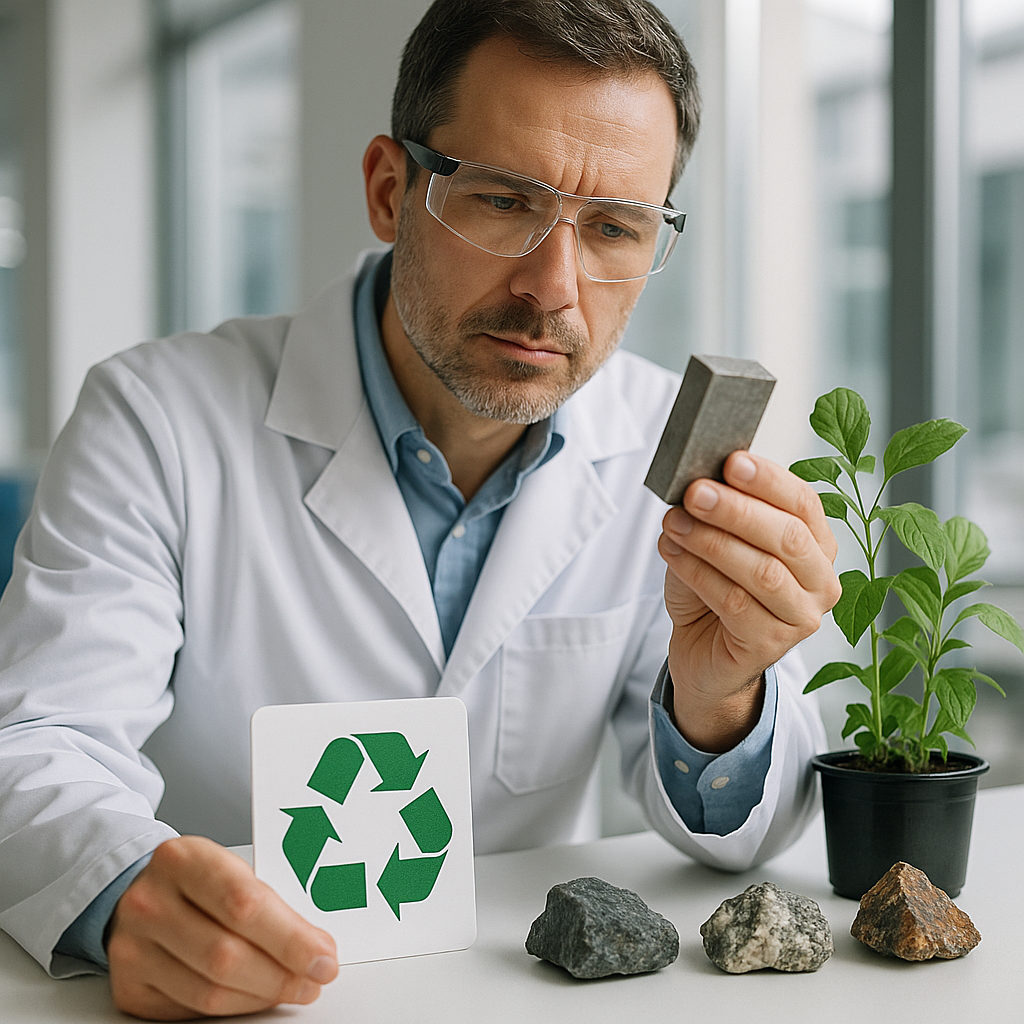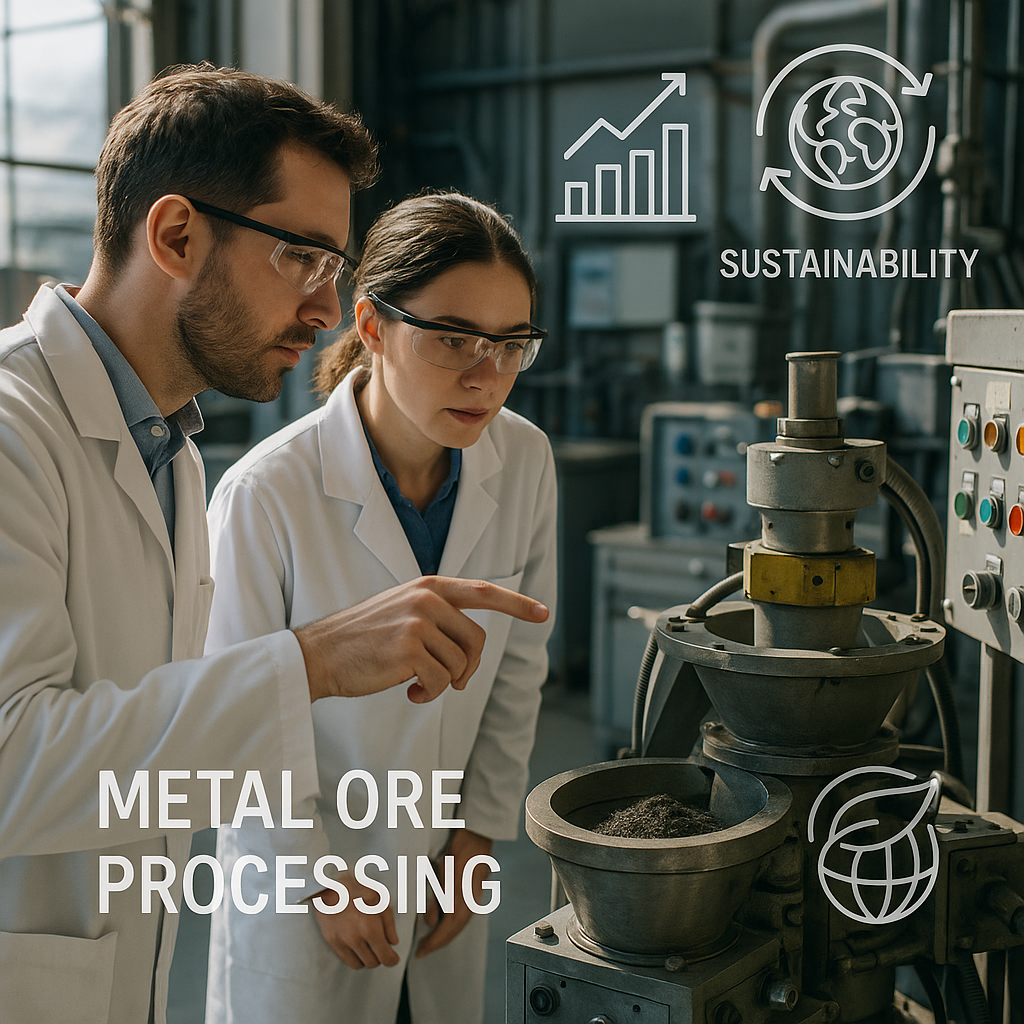5901 Botham Jean Blvd, Dallas, TX 75215
Leaching Process for Metal Recovery: Methods, Applications, and Sustainability Benefits
September 29, 2025Every morning, millions of people brew a cup of tea by steeping a tea bag in hot water. As the water swirls around the tea leaves, it extracts flavor compounds and color. This everyday process is similar to a major technique in the recycling and metal recovery industries.
Leaching is a chemical process used to extract valuable metals from ores or other materials. It involves dissolving the target metal in a solvent, typically an acid or chemical solution, to separate it from unwanted components. The metal dissolves into the solution, much like tea flavors dissolve into hot water.
This extraction method is a key step in hydrometallurgy, which uses aqueous solutions to recover metals from ores, concentrates, and recycled materials. Unlike high-temperature smelting processes, leaching operates at lower temperatures and is often more environmentally sustainable for metal recovery operations.
What Are the Main Types of Leaching Methods?

Leaching is essential in metal recovery and waste management, involving the extraction of valuable materials from solids using a liquid solvent—akin to how water draws flavor from tea leaves. Various leaching methods are chosen based on the material being processed, desired metal recovery rate, and environmental considerations. Here are four primary leaching methods used in the industry today:
Heap Leaching
Heap leaching is widely used for processing low-grade ores that would be uneconomical through conventional milling. The process includes:
Crushing the ore to increase surface area, placing it on pads lined with impermeable materials like clay or synthetic liners, and spraying a leaching solution (typically cyanide for gold and silver or acid for copper) over the top. As the solution percolates through the heap, it dissolves the target metals, and the resulting metal-rich solution is collected at the bottom for further processing.
Heap leaching is popular for its relatively low capital costs and shorter startup time compared to traditional mining operations. However, recovery rates are generally lower, ranging from 60-80% depending on ore characteristics.
Tank/Vat Leaching
Tank leaching, also known as vat or agitated leaching, offers greater control and typically higher recovery rates than heap leaching. This method involves:
Mixing finely ground ore with leaching solution in large tanks where mechanical agitators or compressed air keep the mixture constantly moving. This agitation enhances contact between the solution and ore particles, accelerating the leaching reaction. Tank leaching is preferred for higher-grade ores where the additional processing costs are justified by increased recovery rates, often exceeding 90%.
The environmental impact is more contained since the process occurs in closed vessels, reducing potential solution loss through evaporation or seepage.
In-Situ Leaching
In-situ leaching (ISL), also known as solution mining, is a minimal disturbance approach where the ore is not mined conventionally. The process works by:
Injecting leaching solution directly into the ore body through wells drilled into the deposit. The solution flows through natural pores or artificially created pathways in the rock, dissolving target metals as it passes. Recovery wells then pump the metal-bearing solution to the surface for processing.
This method eliminates the need for traditional mining operations, waste rock disposal, and tailings management, significantly reducing surface disturbance. However, it requires suitable geological conditions with adequate permeability and careful hydrogeological control to prevent groundwater contamination.
Autoclave Leaching
Autoclave leaching is the most intensive approach, used for processing refractory ores resistant to conventional leaching methods. The process involves:
Placing ore in pressure vessels (autoclaves) where increased temperature and pressure significantly accelerate leaching reactions. Operating at temperatures often exceeding 200°C and pressures above 30 bar, autoclave leaching can extract metals from sulfide ores that would otherwise require energy-intensive roasting before conventional leaching.
While offering high recovery rates for difficult ores, autoclave leaching requires significant capital investment and incurs higher operating costs due to the energy needed to maintain elevated temperature and pressure.
[[artifact_table]] Comparison of Leaching Methods by Recovery Rate, Cost, and Environmental Impact [[/artifact_table]]Selecting the appropriate leaching method involves balancing factors such as ore mineralogy, grade, physical characteristics, capital costs, operating expenses, water availability, and environmental regulations. The recycling industry increasingly adopts these methods to recover valuable metals from electronic waste, spent catalysts, and other secondary sources—creating a more circular economy for metals that would otherwise require energy-intensive primary extraction.
What Happens After the Leaching Stage?

After the leaching process dissolves valuable metals into solution, the journey toward recovering pure metals continues with two essential phases: concentration and purification followed by metal recovery. These steps transform the metal-rich solution into marketable metal products.
The first phase involves concentrating the metal-rich solution and removing unwanted impurities, accomplished through several critical techniques. Solvent extraction uses organic chemicals to selectively pull metals from the aqueous solution. This involves mixing the leach solution with an organic solvent that attracts specific metals, leaving impurities behind. Ion exchange employs special resins to capture target metals by swapping them with other ions. Precipitation adds chemicals that cause specific metals to form solid compounds that can be filtered out. Adsorption utilizes materials with high surface areas to collect metals from the solution.
Once concentrated and purified, the solution moves to the final metal recovery stage. Electrowinning applies electric current to deposit pure metal onto cathodes, particularly effective for copper recovery, where copper ions in solution transform into solid copper metal at the cathode. Chemical precipitation involves adding reagents that convert dissolved metals into solid compounds for collection. Gaseous reduction employs gases like hydrogen to convert metal ions into their metallic forms. Each recovery method is suited to different metals and operational conditions.
Choosing between these techniques depends on factors such as the type of metal, solution concentration, desired purity, and economic considerations. Often, recovery operations combine multiple methods to achieve optimal results. For example, copper recovery often couples solvent extraction with electrowinning in what industry professionals call SX-EW (solvent extraction-electrowinning) processes.
These post-leaching processes determine the quality and quantity of the final metal product. Efficient concentration, purification, and recovery not only maximize metal yields but also minimize waste and environmental impact.
Why is Leaching Important for Sustainable Metal Recovery?

Leaching has become a key technology for sustainable metal recovery, offering significant environmental and economic benefits over traditional pyrometallurgical methods. As global metal demand rises and high-grade ore deposits become increasingly scarce, leaching provides a vital way to access metals from previously inaccessible sources.
Lower Environmental Impact
Traditional processes like smelting require extreme temperatures, consuming large amounts of energy and releasing significant greenhouse gases. In contrast, leaching occurs at much lower temperatures and pressures, resulting in a substantially reduced carbon footprint for metal recovery operations using leaching technologies.
For example, hydrometallurgical extraction using leaching solutions often operates at near-ambient temperatures, requiring only a fraction of the energy needed for smelting, which can exceed 1000°C. This energy efficiency is crucial as mining and metallurgical industries face more pressure to reduce their environmental impact.
Unlocking Value from Low-Grade Ores
Leaching’s capacity to economically process low-grade ores, which would be financially unfeasible with conventional methods, is a significant contribution to sustainable metal recovery. As high-grade mineral deposits deplete globally, extracting metals from previously unviable sources is critical for meeting demand.
Heap leaching, for example, can extract valuable metals from tailings and waste sites with metal concentrations too low for traditional processing. Industry experts emphasize that as emerging technologies require more resources, achieving nearly complete recovery is vital for resource conservation.
Advancing Metal Recycling
Leaching is crucial for recycling metals from secondary sources like electronic waste, spent batteries, and other post-consumer products. This supports the circular economy by reintegrating valuable metals into production cycles rather than letting them accumulate in landfills.
Electronic waste contains up to 60 different elements, including base, critical, and precious metals like gold, silver, and platinum group metals. Leaching allows for the selective dissolution and recovery of these metals from complex material matrices that would be difficult to process traditionally.
Versatility for Complex Materials
Modern products often consist of intricate material combinations difficult to separate mechanically. Leaching offers superior selectivity, allowing targeted metal dissolution while leaving others intact. This is especially valuable for processing materials with complex compositions, such as printed circuit boards or multi-element ores.
For example, selective leaching can recover copper from electronic waste without affecting the recoverability of precious metals in subsequent steps, maximizing waste stream value while minimizing secondary waste generation.
Bioleaching: Enhancing Sustainability Further
Bioleaching represents a further evolution in leaching technology, enhancing its sustainability. By utilizing microorganisms to facilitate metal dissolution, bioleaching reduces or eliminates the need for harsh chemicals. This approach operates at ambient temperatures and pressures, reducing energy requirements and environmental impacts.
Fungi and bacteria in bioleaching processes can extract a range of valuable metals, including copper, gold, zinc, nickel, and rare earth elements. These microorganisms produce organic acids or directly oxidize mineral sulfides, naturally dissolving metal compounds without external energy input.
Economic Viability
Leaching presents a more economically viable approach for metal recovery, beyond its environmental advantages. Lower capital investment requirements for leaching operations make it more accessible compared to establishing smelting facilities, important for developing regions with significant mineral resources but limited capital for large-scale pyrometallurgical infrastructure.
Additionally, the scalability of leaching processes allows operations to start small and expand as needed, unlike traditional smelting operations, which require significant upfront investment and must operate at scale to achieve economic viability.
Conclusion: The Future of Leaching in Metal Recovery

Leaching processes have long been central to modern metal recovery operations. With declining global ore grades and scarcer mineral deposits, these chemical extraction methods provide sustainable solutions to meet rising metal demand. The industry has significantly evolved from traditional high-concentration acid approaches to more environmentally compatible methods that minimize ecological impact while remaining economically viable.
Recent advances in leaching technology hold promise in addressing the challenges of resource scarcity and environmental protection. Low-concentration organic acids, such as citric acid, offer metal extraction efficiencies comparable to conventional sulfuric acid while being biodegradable and posing fewer environmental risks. This move toward gentler yet effective lixiviants is a critical step forward for the industry. For specialized metal recovery needs or guidance on sustainable leaching processes, contact Okon Recycling at 214-717-4083.
